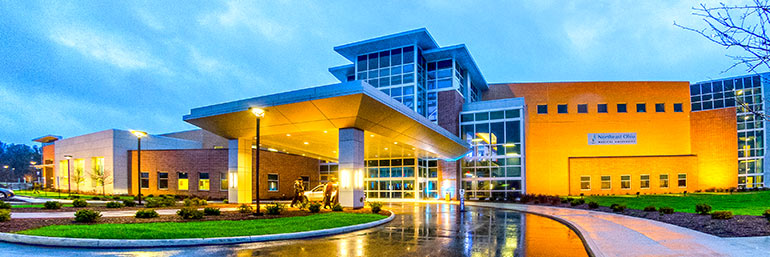Feb 1

NEOMED Celebrates Black History Month
Dear NEOMED Community:
For the month of February, Northeast Ohio Medical University celebrates Black History to highlight the pivotal role that Black Americans have played in shaping our great country.
While the celebration began with African American historian and writer Carter Godwin Woodson’s scholarly work that led to a weeklong celebration — now Black History Month — in 1926, the breadth of contributions of Blacks in America begins with the history of people from the African diaspora. Introduced to ensure that school children are exposed to Black history, Woodson chose February to coincide with Abraham Lincoln’s and Fredrick Douglass’ birthdays.
Throughout the month NEOMED will host events and dialogue that continue this much-needed tradition. From a VITALS discussion with Yoleetah Ilodi, M.D., FACP, and a diversity training series, “Creating an Inclusive Institutional Culture,” by Jeannette E. South-Paul, M.D., to Black History Month Jeopardy, hosted by second-year medicine student Roy James II, there’s plenty to enjoy around campus throughout February.
In the field of medicine alone, there are many documented contributions and innovations by Black Americans. In 1783, there was James Durham, who was born into slavery in 1762 and eventually bought his freedom, opening a medical practice where he cared for patients of all racial backgrounds. Although he did not have a formal medical degree, Durham saved many patients who experienced yellow fever during an outbreak in 1789.
In 1837, James McCune Smith, M.D., became the first Black American to practice in the United States with a medical degree. Because of segregated admission practices, Smith had to enroll at the University of Glasgow in Scotland. He was also the first Black physician to establish a pharmacy.
The first Black woman physician in the United States was Rebecca Lee Crumpler, M.D. She earned her degree in 1864 from the New England Female Medical College in Boston. Nineteen years later, she published Book of Medical Disclosures, a volume of medical advice for women and children.
The first successful heart surgery was performed in 1893 by Daniel Hale Williams, M.D. A few years earlier, in 1891, Dr. Williams had founded Provident Hospital and Training School for Nurses, the country’s first interracial hospital for both Black and White doctors to study and for Black nurses to receive training.
In 1917, a Black physician named Louis T. Wright, M.D., developed a technique for vaccinating soldiers against smallpox. More than 30 years later, he became the first clinician to investigate the treatment of humans with aureomycin, a tetracycline antibiotic.
And in 1939, Charles Drew, M.D., a surgeon, discovered that blood plasma can be dried and reconstituted when needed, making it an effective substitute for whole blood transfusions. His procedure saved the lives of American soldiers during World War II and other conflicts.
These are just a few of the contributions of Black Americans to the advancement of medicine. There’s so much more to learn.
The insight and inspiration gained from learning the history of contributions by Blacks Americans to our nation’s excellence are as important today as they were nearly 100 years ago.
Please join me in engaging with and celebrating Black History Month. It’s truly important to all of us.
Sincerely,
John T. Langell


